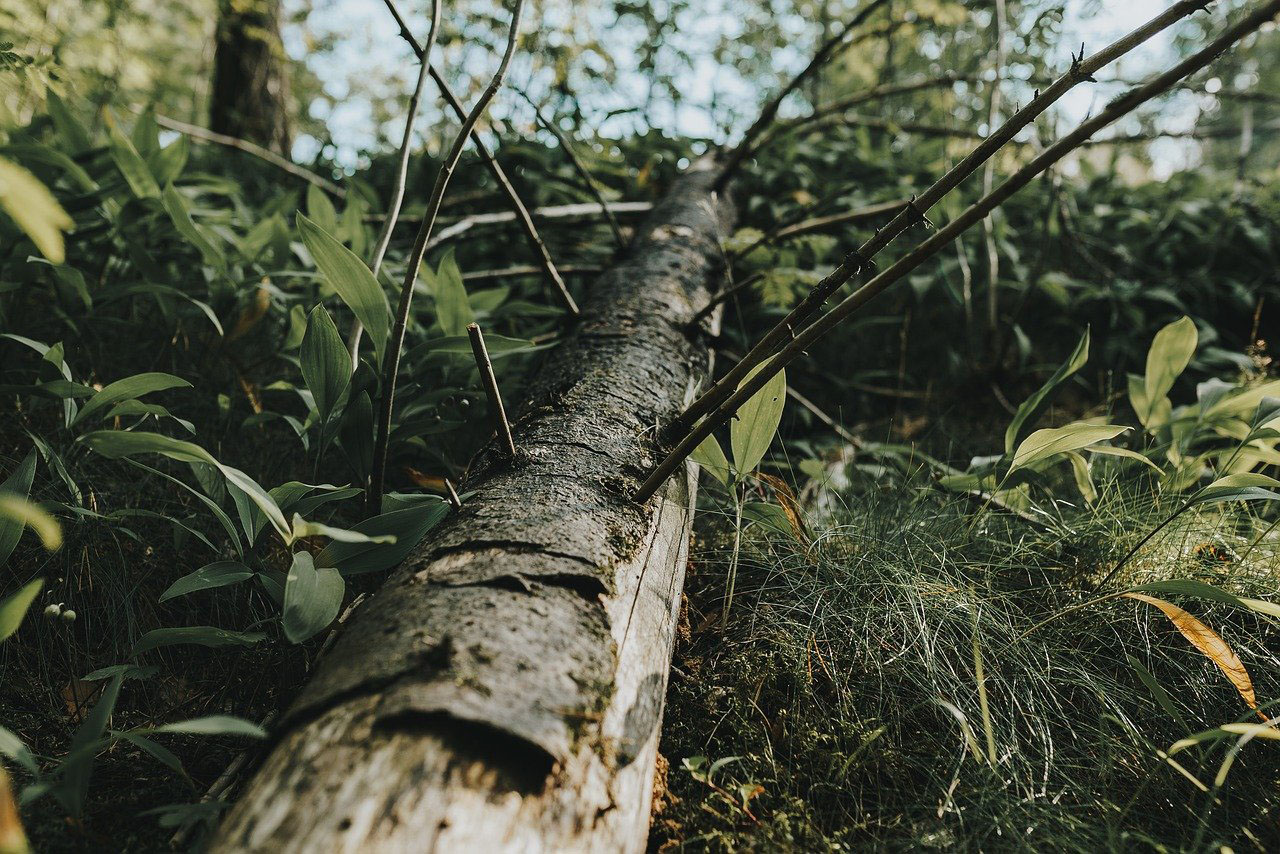 Image by Jeremy Kyejo from Pixabay
Image by Jeremy Kyejo from Pixabay Perhaps the most well-known anecdote referenced from the history of science describes the time Isaac Newton discovered the existence of gravity after an apple fell from a tree and hit his head. Assuming that event played out the way it did, he was lucky that it was only an apple that landed on his head and not an entire branch. Many people may not be so actively aware of this, but branches from healthy trees fall to the ground quite frequently, often without any warning signs in advance.
But what usually comes to mind when you think of downed branches? High intensity storms, raging winds and hail, and periods of heavy snowfall are the typical events commonly associated with branch collapses. For the most part, this perception is largely true; branches do mostly fall in the winter months, but this is not the only time it occurs. Even throughout the warmer summer months, tree branches fall and present just as much danger if not more to unsuspecting people.
Deadly Consequences
When branches break off during winter storms, they are less likely to hurt someone because people tend to spend the majority of their time inside. But during the summer, people take advantage of the nice weather and venture outside, perhaps to a public park, a nature reserve, or forested hiking trail, all abundant with trees. And because people tend to seek out shade to stay as cool as they can, the chances of a branch breaking off and injuring someone are significantly higher. In fact, this very scenario unfolded in 2017 in Tel Aviv in which two people were moderately injured by a falling branch on Shai Agnon Street despite the mild weather conditions.
However, the consequences of this phenomenon have also proven deadly. Take for instance the incident that occurred at the Jordan River Park in 2010, in which a tree branch snapped off and struck a tent in the early hours of the morning killing a 14-year-old boy who was sleeping inside of it. Nine years later, a similar tragedy occurred at the Action Park, an amusement park located near Lachish in the southern Negev region, in which a eucalyptus branch broke off and killed a 10-year-old boy sitting on a bench below. Many other fatal incidents like this have occurred all over the world.
However, it was not until recently that agronomists, government officials, and the public acknowledged falling branches in the summer to be a risk worth considering. Such concerns were primarily reserved for the winter and its aggressive weather conditions.
Although the issue is small in scope, a new Israeli article recently published in the JNF’s journal, Ya’ar, thoroughly assesses the phenomenon in light of the reoccurring head injuries and deaths, it and raises awareness to prevent more incidents from occurring.
“I have been aware of the phenomenon for about a year and a half-two years,” says Abigail Heller, head the Forest and Trees division within the Ministry of Agriculture and one of the study’s authors.
“I was taught that branches fall in the summer only if the trees are near water sources, but I saw in some instances where that wasn’t necessarily the case. So, I began to ask around and find out more about it, and as soon as I came across relevant academic literature, it settled my mind.”
Branching Off
Heller and her team, which included private agronomists and those from Hebrew University’s Department of Agriculture, researched documented summer-timed branch falls and discovered that the phenomenon can be traced back to the end of the 19th century. However, the many explanations for the phenomenon provided by the academic literature are often contradictory. For example, not every explanation applied to tree species local to Europe is suitable for Israel’s regional tree species.
The two main approaches to explain the phenomenon relate to the concept of water potential, which determines how efficiently water is transported within a plant, or in this case, a branch.
Heller illustrates the concept of water potential using laundry as an example. “Wet laundry has a high water potential,” she says. “Hot and dry air, on the other hand, has low water potential. Water moves from where water potential is high to where it is low. This is why laundry dries when you hang it outside on a sunny day.” Therefore, if the air outside is damp, the laundry will not dry out because the water inside has nowhere to go.
With regard to trees and their branches, a side effect occurs with water potential. When the air outside is hot and dry, the water in a tree’s xylem, which acts as a pipe to transport water its roots to its branches, can evaporate into the air.
“When this happens the pipes shrink, which results in the formation of cracks along the tree’s branches, and this causes them to break and fall to the ground,” Heller explains.
But this can also happen if there is positive water potential and no opportunity for evaporation. In this case, when the outside air is humid (higher level of water potential) as opposed to dry, the water cannot evaporate into the air. In this scenario, the tree closes its stomata, the microscopic openings on leaves through which gas exchange and water evaporation take place, and the water stays inside the branch.
“As the tree continues to carry water upwards from the roots, excess water can form inside the branches making them heavier,” she says. “Depending on the tree and the strength of the branch, once it reaches a certain weight, the branch can break.”
Preventative Measures
Whether it’s the high or low water potential initiating a tree branch to break off and fall, it is important to understand the danger this phenomenon presents to the public. Branches do not usually show significant defects before they snap, so it is difficult to determine when and which branches will break in advance. Fortunately, there are some indicators one can look out for to identify the types of at-risk branches that are prone to fall. Although the guidelines are relevant for the general public, they are mostly directed at agronomists who are responsible for risk management when pruning municipal trees.
“It’s important to look for the defects and problematic branches when surveying trees,” says Heller referring to the additional signs to look for beyond just decay. “Nowadays, when I teach surveyors how to perform proper risk assessments for trees, I also instruct them to pay attention to long, horizontal, and arched branches as they are the ones that are more likely to fall during the summer. When finding such branches, one should check whether they can be shortened and reduced in weight before resorting to cutting them back altogether.”
The researchers also include guidelines that are more relevant to municipal authorities and national parks, suggesting they limit activity at public-absorbing sites on hot, dry days where many trees are planted just as access to these areas are restricted during stormy weather. In addition, the researchers suggest that trees prone to summer branch collapses should not be planted in such areas in the first place, and that the trees that have been already planted in the past should be undergo risk assessments, especially at sites where large numbers of older trees are clustered.
Avoiding Unnecessary Deaths
However, these guidelines offered by the researchers are not binding. At the national level, the Ministry of Agriculture does not have a department of tree surveyors, and there is no law that regulates tree maintenance or requires inspection once every few years. The surveys that are conducted are done so through local municipalities and private entities.
Compiled by Heller in 2019, the Ministry of Agriculture published a general document for tree risk management designed to help various surveyors carry out their work diligently. While some municipalities have their own procedures based on the ministry guidelines, not every municipality has a procedures document. Plus, it is very difficult to check each and every tree because there are so many in some municipalities. For example, Tel Aviv-Yafo has about 150,000 planted trees.
Although the number of people killed by falling branches is small compared to other risk factors, Heller believes the falling branch phenomenon deserves more attention.
“During the twenty years I have been in my job, there have been about ten mental injuries for various reasons related to trees. And although there may just be one death every two years or so, these are unnecessary deaths that can be avoided,” she concludes.
ZAVIT – Science and the Environment News Agency























 More news and opinions than at a Shabbat dinner, right in your inbox.
More news and opinions than at a Shabbat dinner, right in your inbox.